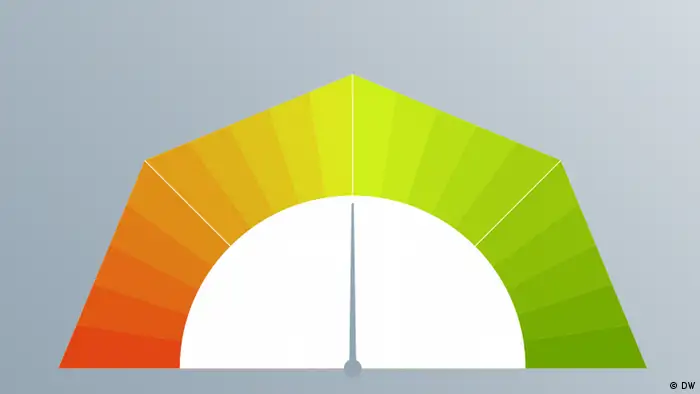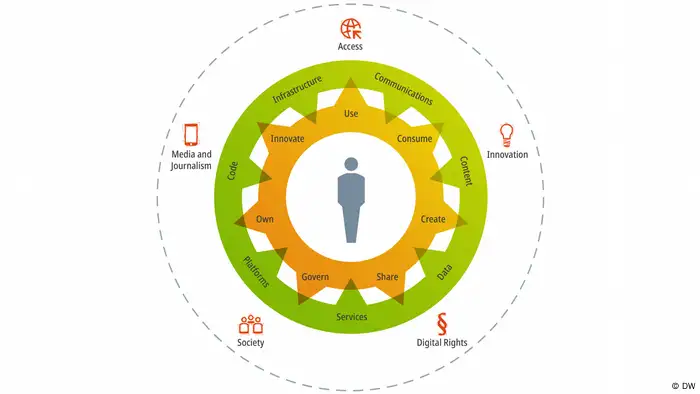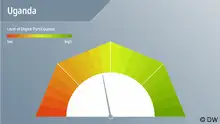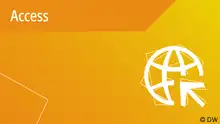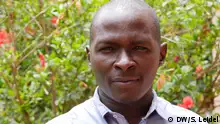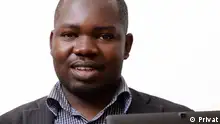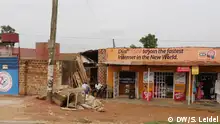#speakup barometer | Uganda
What is the #speakup barometer?
Why are we assessing digital participation? What are our methods and approach? You’ll find the standout aspects of our #speakup barometer in this overview.
The #speakup barometer is a DW Akademie project that examines the connection between digital participation, freedom of expression and access to information in selected countries in which DW Akademie works on media development projects together with local partner organizations.
The #speakup barometer aims to provide an overview of the current state of digital participation in these countries and looks at future developments in order to identify new potentials and risks.
The #speakup barometer will help media development organizations, NGOs, journalists and other practitioners develop measures to improve digital participation with the aim of strengthening the rights to freedom of expression and free access to information.
The #speakup barometer will also encourage discussion about the topic of digital participation and act as a source for information and news related to the topic.
The #speakup barometer is based on a model of digital participation that makes it possible to define and assess the participation rate.
Why are we assessing digital participation?
The Internet has become one of the world’s primary communication mediums, and today anyone in principle can access technologies and information, produce media content, share it with the rest of the world and get feedback. However, those who have no access to digital media run the risk of being excluded from many aspects of public life due to the primacy of digital communication: access to media, interpersonal communication and political debates are increasingly taking place online. Thus, digital participation has become essential to social participation and a prerequisite for exercising the rights of freedom of expression and access to information. In addition, developments around topics such as fake news, online propaganda and hate speech show that simply giving people a voice is not enough. Constructive social dialogue can only succeed if certain conditions are met—an Internet connection alone is not sufficient.
What is our goal?
Our primary goal is to highlight the means to strengthen freedom of expression and access to information through digital participation. The Internet opens up an interactive channel and provides the creative means for everyone to express themselves and connect with others. This is reflected by our definition of digital participation, which serves as the basis for the #speakup barometer project: People are able to communicate freely, independently and confidently in digital spheres.
#speakup barometer is for media development practitioners as well as for journalists, bloggers and everybody who is interested in this topic. Using concrete examples, we will to show how participation can be improved. To this end, we talk to experts from a number of countries and tell stories about users from each – including what challenges they face vis-à-vis digital participation. We also want to look ahead, showing the potentials of the countries we surveyed and presenting ways that digital participation can be improved in each of them.
What is our approach?
To find a way to handle the complexity of digital participation and make it accessible, we developed a model focused on people. The model features a set of actions related to digital participation (orange circles in the center) and different areas of participation (green segments). One can combine any action with any field and come up with multiple readings: People own data, people share content, people use platforms, etc. The combination of actions with fields of participation illustrates the potential for participation on an abstract level. However, it says nothing about the actual levels of digital participation on a country basis. This is what we want to find out.
For that reason, we developed a method to describe digital participation in concrete ways and to assess it. The first step involved designating around 100 attributes to give us an indication of the level of digital participation in real life and examine what obstacles might exist. In a second step we clustered all attributes in thematic fields: Access, Innovation, Digital Rights, Society, Media and Journalism. We then integrated these five clusters into our model (dotted lines). This is important because digital participation always depends on environmental conditions, e.g. the quality of a country’s infrastructure determines if people can connect to the Internet and the diversity of the media and information ecosystem is important in ensuring that all societal groups are represented in the media.
Mapping Digital Participation
The mind map below shows all the attributes we collected and which are important in describing digital participation within the context of freedom of speech and access to information. The DW Akademie model of digital participation distinguishes five generic clusters: Access, Digital Rights, Media and Journalism, Innovation, and Society. For each, we have defined sub-clusters on a second level which allow us to describe the level of digital participation in a more in-depth manner. A third level features attributes relating to each element in the sub-cluster, specifically defining research questions related to it. For example, for the cluster “Access”, we identify the sub-cluster “public Internet” as well as the corresponding research question “Is public Wi-Fi available?” For an interactive online version of the map click here.
What is our method?
What are the concrete steps we follow to assess the level of digital participation? Based on our model, we carry out our research in three steps:
First step:
(Research question: What is the level of digital participation in a country?)
- Detailed desk research based on the indicators.
- In-depth interviews based on the indicators with experts on each cluster from the subject country.
Second step:
Research analysis coding within each thematic field.
Research question: What potential for digital participation exists in each thematic field?
There are a total of five rating levels:
- 4 points = very high potential
- 3 points = high potential
- 2 points = medium potential
- 1 point = little potential
- 0 points = no potential
With 25 thematic fields we have a maximum total of 100 points for each country.
To carry out the coding, we use an evaluation grid. It contains coding rules with concrete criteria for each topic, on the basis of which the research results are evaluated. The evaluation grids for all thematic fields are public and can be viewed here (LINK)
Third step: Scoring
The final result is a score for every thematic field (maximum 20 points for every field) and an overall score which is the sum of all five thematic fields (maximum 100 points).
What are the results?
The barometer should provide an overview of digital participation in a country: the potentials and opportunities but also the risks and challenges.
We want to highlight positive examples, stories and, with the help of the experts, give an outlook for the future:
- Where are interesting developments, trends and projects to follow?
- What can be done to improve digital participation in different fields so that more people can benefit?
- What are promising innovations, startups and research projects?
We also include a color-coded “barometer” for each country to provide a quick overview.
The barometer’s color range indicates the following:
People in (a country) face limitations in using the Internet for communication and information.They will continue to struggle for their right to digital participation in the future. Digital rights are currently severely restricted. Journalists and media usually work under very difficult conditions. Only a small percentage of the population can currently use all the options offered by digital media. There are signs of a digital divide between groups of people and/or regions. An innovation scene is non-existent.
People in (a country) actively seek new paths to increase digital participation and will increasingly benefit from it in the future. Currently, digital rights are partially restricted. Journalists and the media often cannot work freely. Not all groups in society can currently benefit from the potential of digital media. There are still signs of a digital divide between groups of people and/or regions. An innovation scene is weak.
People in (a country) have a high level of digital participation and will continue to explore its creative possibilities in the future. Digital rights are mostly guaranteed. Journalists and media can usually work freely. Most groups in society increasingly benefit from the possibilities of digital media. Signs of a digital divide between groups of people and/or regions are weak. An innovation scene is flourishing.
People in (a country) have achieved the highest level of digital participation and the situation will likely remain that way in the future. Digital rights are fully guaranteed. Journalists and media can work freely. Almost all groups in society benefit from the possibilities of digital media. There are no signs of a digital divide between groups of people and/or regions. An innovation scene is very strong and internationally well connected.
Another view of the results is based on the clusters. For each cluster we will publish a summary of our assessment in form of an article as well as a graphic that gives a quick overview.
Which countries are we studying?
In 2018 we began the project with Uganda and will follow up with research on Ghana and Kenya. In 2019 and 2020 we will look at countries in Latin America, Eastern Europe, the Middle East and Asia.
What are ways to participate?
We appreciate your feedback: Email address.
DW recommends
Downloads
- Date 04.10.2018
- Author Julius Endert
- Feedback: Send us your feedback.
- Print Print this page
- Permalink https://p.dw.com/p/2xB1G
- Date 04.10.2018
- Author Julius Endert
- Send us your feedback.
- Print Print this page
- Permalink https://p.dw.com/p/2xB1G

